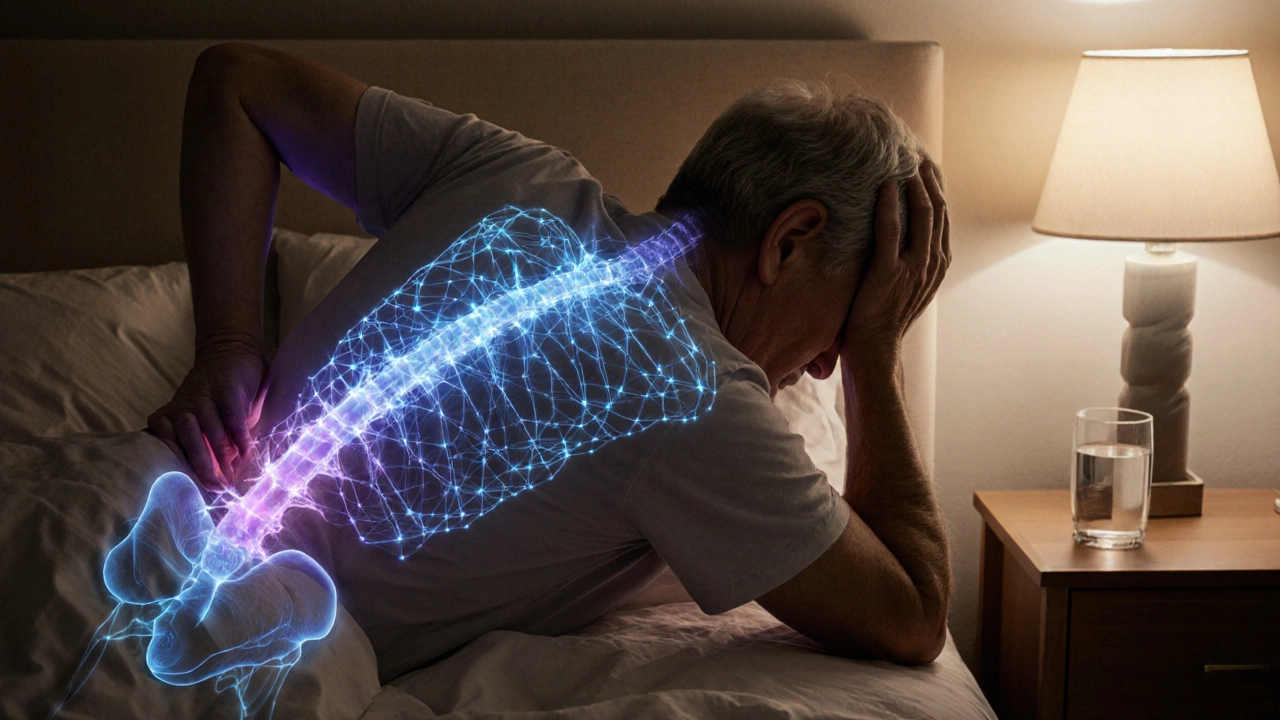Chronic Pain Treatment: Real‑World Tips to Feel Better
If you wake up every day with a throbbing ache that doesn’t quit, you know how frustrating it can be. The good news is that treatment isn’t a one‑size‑fits‑all deal. By mixing medicines, simple habits, and a few smart tools, most people can cut the pain down to a manageable level.
Medications and Therapies That Actually Work
First off, talk to a doctor about the right prescription. Opioids might sound tempting, but they carry serious risks, especially for long‑term use. Instead ask about non‑opioid options like NSAIDs (ibuprofen, naproxen) or nerve‑pain meds such as gabapentin and duloxetine. These drugs target the pain signals differently and often have fewer side effects.
Beyond pills, physical therapy can change the game. A physiotherapist will guide you through exercises that strengthen the muscles around the painful area, which eases pressure on nerves. Even a short, daily stretch routine can reduce stiffness and improve mobility.
For some, advanced options like TENS (transcutaneous electrical nerve stimulation) or low‑dose antidepressants work well. The key is to keep an open line with your healthcare provider and tweak the plan as your body responds.
Everyday Changes That Cut Pain
Medication is only part of the picture. Simple lifestyle tweaks can shrink pain spikes dramatically. Start with sleep: aim for 7‑9 hours in a cool, dark room, and consider a firm mattress if your back hurts.
Eat a balanced diet rich in omega‑3 fatty acids (fish, flaxseed) and antioxidants (berries, leafy greens). These foods fight inflammation, which fuels chronic pain. Cut back on sugary drinks and processed snacks—they can worsen flare‑ups.
Stay moving, but don’t overdo it. Low‑impact activities like walking, swimming, or cycling keep blood flowing and release endorphins—your body’s natural painkillers. Even 10‑minute walks several times a day add up.
Stress management is a hidden pain driver. Try deep‑breathing, mindfulness apps, or short meditation breaks. When the mind relaxes, the nervous system calms, and pain signals dull.
Heat and cold are cheap, effective tools. A warm shower, heating pad, or warm‑water bottle loosens tight muscles. An ice pack (wrapped in a towel) numbs acute flare‑ups. Switch between them based on what feels better.
Finally, track your pain. A simple notes app can log intensity, triggers, and what helped. Over weeks, patterns emerge, making it easier to predict and prevent bad days.
Living with chronic pain isn’t about curing it forever—it’s about learning to live with it on your terms. Combine the right meds, steady physical activity, smart eating, and stress‑busting habits, and you’ll see the pain shrink enough to enjoy life again.
Can Chronic Pain Be Overcome? Effective Treatment Strategies Explained
Explore whether chronic pain can be overcome with a blend of education, movement, therapy, medication and interdisciplinary programs for lasting relief.
Common Pain Medications Doctors Prescribe: An Overview
Discover the most common pain medications doctors prescribe, when they choose each type, key side‑effects, and how non‑drug therapies fit into treatment.
Most Severe Pain Medication: What Works for Extreme Chronic Pain?
Wondering what medication doctors use for the worst pain out there? This article breaks down what counts as the most severe pain medication, why doctors reach for these drugs, and the risks that come along for the ride. You'll find out when, and for whom, these heavy-duty meds are given. Get practical tips for safe use and for talking to your doctor if your pain feels out of control. No fluff—just the facts and real-world advice from someone in the know.
Does Nerve Pain Ever Get Better? Discover What You Can Do
Nerve pain can be a real burden, affecting daily life for many. While it may seem like relief is out of reach, there are pathways to improvement. Exploring treatment options, lifestyle changes, and understanding the journey of nerve pain can make a difference. Effective management and a hopeful outlook might just make things better over time.
Unbearable Back Pain Relief: Practical Tips That Actually Work
Back pain can strike at any moment and when it does, it can feel like it's there to stay. Long-term solutions aren't always complicated; sometimes they require tried and tested methods that are easy to implement. Here's a guide to understand, manage and ultimately relieve your persistent back pain with practical advice that could make a difference in your daily life.
Effective Pain Relief for Nerve Damage: Options and Advice
Nerve pain, often described as a stabbing or burning sensation, can be debilitating. Finding the right relief is crucial for improved quality of life. This article dives into a variety of options available for nerve pain relief, from medications and therapies to lifestyle changes and alternative treatments. It aims to give readers a comprehensive understanding of how these methods can help alleviate pain and enhance comfort.
Understanding the Most Effective Pain Relievers for Chronic Pain
Chronic pain affects millions worldwide, disrupting daily lives and mental well-being. Identifying the most effective pain relievers is crucial in managing it. This article delves into the capabilities and uses of leading pain relief medications, alternative treatments, and the role of holistic approaches. Gain insights into what makes a painkiller powerful and how it can be utilized safely.







